Building A Safer, More Walkable Norwalk
As our city grows, so does our commitment to becoming a safer, more connected, and more walkable place to live, work, and explore. From bold planning policies to on-the-ground infrastructure improvements, Norwalk is building a transportation system that puts people first, whether they’re walking their kids to school, biking to work, or taking transit across town.
This blog breaks down the key initiatives shaping Norwalk’s mobility future, and how you can get involved in building a city that works for everyone.
Laying the Groundwork: Norwalk’s Planning Vision
At the core of Norwalk’s transformation is the
Transportation Master Plan, a 10–20-year roadmap guiding how we improve movement across the city. This comprehensive plan is built around critical priorities:
- Vision Zero – Eliminating traffic-related fatalities and serious injuries.
- Micro-mobility – Supporting e-bikes, scooters, and other small-scale, sustainable travel.
- Curb-space Management – Efficient use of limited curb space for loading zones, parking, and transit stops.
- Equity in Transportation – Ensuring all communities have safe, affordable, and accessible options.
In alignment with the
Norwalk Citywide Plan (POCD), these strategies support long-term development goals and ensure transportation infrastructure keeps pace with housing, jobs, and sustainability.
 Photo credit to Norwalk Redevelopment Agency
Photo credit to Norwalk Redevelopment Agency
Complete Streets: Streets for Everyone
Adopted in November 2024, Norwalk’s
Complete Streets ordinance ensures that all new street designs and retrofits accommodate people of all ages and abilities, whether walking, biking, driving, or using a wheelchair. The ordinance includes a new
Complete Streets Design Guide and Typology Map that helps guide how streets should function across neighborhoods, downtown areas, and commercial corridors.
Making Walking and Biking Safer and Smarter
With a focus on
active transportation, Norwalk is investing in walkable, bikeable connections throughout the city:
Pedestrian & Bikeway Transportation Plan
This
detailed plan includes:
- Corridor assessments and high-priority improvement zones.
- Design schematics for intersections, bike lanes, and pedestrian upgrades.
- Implementation strategies that prioritize the most critical and underserved areas.
Activity Toolkit and Local Trails
Norwalk’s growing trail network, including the popular
Norwalk River Valley Trail (NRVT), offers safe, scenic routes for walking, jogging, and biking. Bridges, crossings, and safety signage make these pathways a key part of the city’s active lifestyle vision.
 Photo credit to: Norwalk Hour
Photo credit to: Norwalk Hour
New Safe Sidewalks for Back to School
Just in time for the school year,
new sidewalks were installed near South Norwalk Elementary, which opened on August 25, 2025. These improvements make it safer for students and families to walk to school, connecting the dots between infrastructure investment and real-world benefits.
Track the Progress
The
Connectivity Dashboard provides data on:
- Bike lanes and routes
- Public bike racks
- Transit usage and connectivity across the city
Big Changes in Transit: Beginning August 11
After a multi-year planning process, Norwalk Transit District rolled out a bus
network overhaul on August 11 that:
- Consolidates and simplifies the local bus network from 13 routes to 7.
- Provides 15-minute bus frequencies during the weekday peak between major destinations, including South Norwalk, Main Avenue and Connecticut Avenue.
- Establishes three new mini hubs for transfers at South Norwalk Station, Burnell Boulevard and East Norwalk Station.
- Streamlines routes for single transfer trips between key areas.
- Extends service on Routes 1, 2 and 3 until 11:00 pm weekdays and Saturdays and on Sundays between 8:00 am and 8:00 pm.
This overhaul brings flexibility and reliability to riders, making public transit a more practical option for mobility.
Infrastructure Investments: Wall Street and Beyond
Norwalk’s
$30 million Wall Street Corridor Revitalization is a multi-year commitment to transforming the heart of downtown. Key features include:
- Wider sidewalks and safer crosswalks
- Traffic calming measures to slow speeds
- Improved lighting, landscaping, and public spaces
- Enhanced accessibility for all users
Expected to be completed by 2030, this project is a major step forward in building a downtown that’s vibrant, walkable, and people-friendly. Learn more at
Park Norwalk.
SoNo & Beyond: Connecting Neighborhoods and Nature
Strategic redevelopment is shaping more multi-modal and connected destinations, including:
SoNo Station Area & Waterfront Access
Norwalk is integrating active transportation design into a
revitalized intermodal hub, making it easier to walk, bike, or transfer to transit while enjoying access to the waterfront and SoNo’s dynamic urban environment.
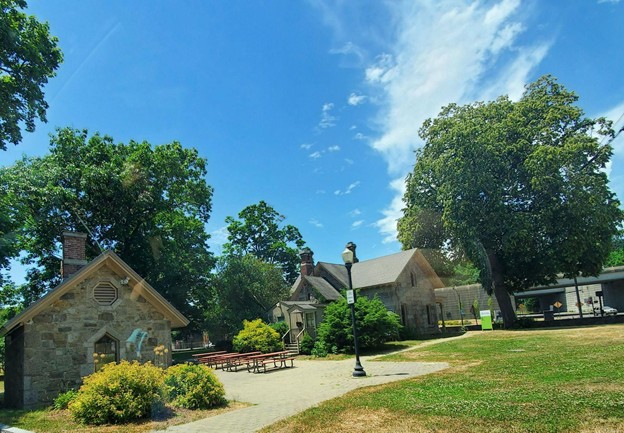 Photo credit to:Visit Norwalk
Mathews Park Mobility Enhancements
Photo credit to:Visit Norwalk
Mathews Park Mobility Enhancements
Mobility improvements are being made to ensure better access into
Mathews Park, connecting recreational space with neighborhoods and downtown, and improving the experience for pedestrians, cyclists, and transit riders alike.
Details on both initiatives can be found at
norwalkredevelopmentagency.org.
How You Can Get Involved
Creating a safer, more walkable Norwalk requires community input. Here's how you can help:
- Explore the Transportation Master Plan and give feedback on projects.
- Attend public meetings and workshops hosted by the City and Redevelopment Agency.
- Try the new bus routes and share your rider experience.
- Use trails and sidewalks, and report issues or ideas through city apps and online platforms.
- Follow @NorwalkTomorrow for updates on planning efforts and public engagement opportunities.
Walk With Us Into Norwalk’s Future
Norwalk’s commitment to mobility, safety, and sustainability is a promise to every resident, student, commuter, and visitor. From new sidewalks near schools to major transit upgrades and downtown revitalization, every project brings us one step closer to a more connected and walkable city.
Norwalk 2025: A Blueprint for Sustainable Growth, Great Transit, and a Connected Community
Norwalk, Connecticut, is making bold progress toward becoming a model city for sustainable growth, quality of life, and urban innovation. The City of Norwalk stands at the forefront of urban innovation, sustainability, and community-based growth on the Long Island Sound.
As outlined by city leadership and planning agencies, Norwalk’s primary objectives form a comprehensive blueprint to guide the city through 2025 and beyond. Here’s a look at what these objectives mean for residents and businesses and how Norwalk’s latest achievements, such as the innovative new bus network, are moving the city forward.
[caption id="attachment_2547" align="aligncenter" width="1024"]
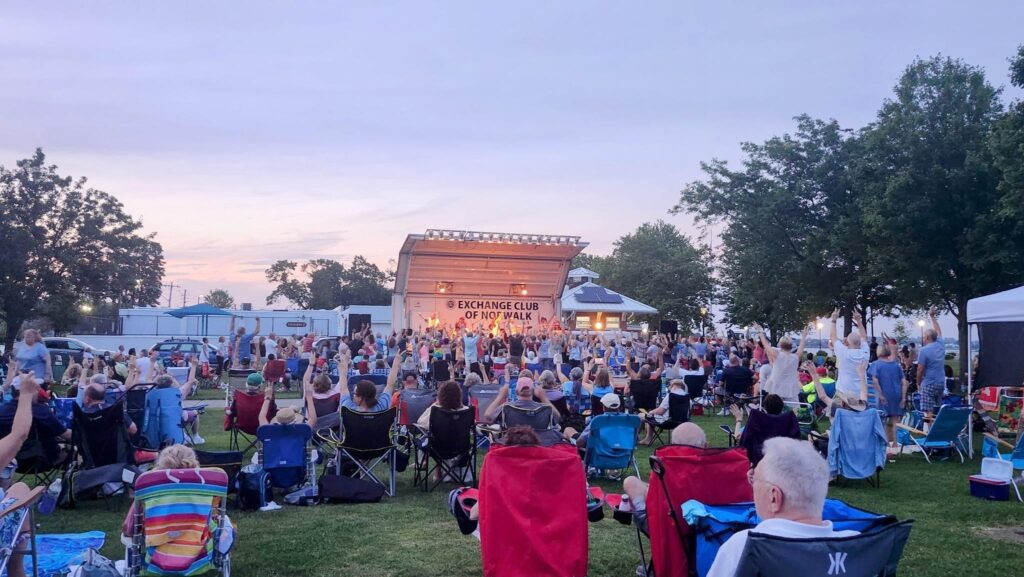 Photo Courtesy of I Love Norwalk CT! Facebook Community (Calf Pasture Beach Summer Concert Series)
Photo Courtesy of I Love Norwalk CT! Facebook Community (Calf Pasture Beach Summer Concert Series)[/caption]
Norwalk’s Vision: Guiding the city’s strategy are these essential priorities
Supporting Economic Growth and Local Businesses
Norwalk fosters a robust economy by investing in local entrepreneurs, offering networking and training, and championing commercial partnerships that keep dollars circulating locally. The city’s revitalized business districts, including SoNo and Wall Street, exemplify this commitment, a point echoed by the
U.S. Chamber of Commerce and Smart Growth America.
The
Greater Norwalk Chamber of Commerce and the city’s Economic and Community Development team regularly organize business networking opportunities, skill-building workshops, and public campaigns to highlight Norwalk-made products and services.
[caption id="attachment_2550" align="aligncenter" width="1024"]
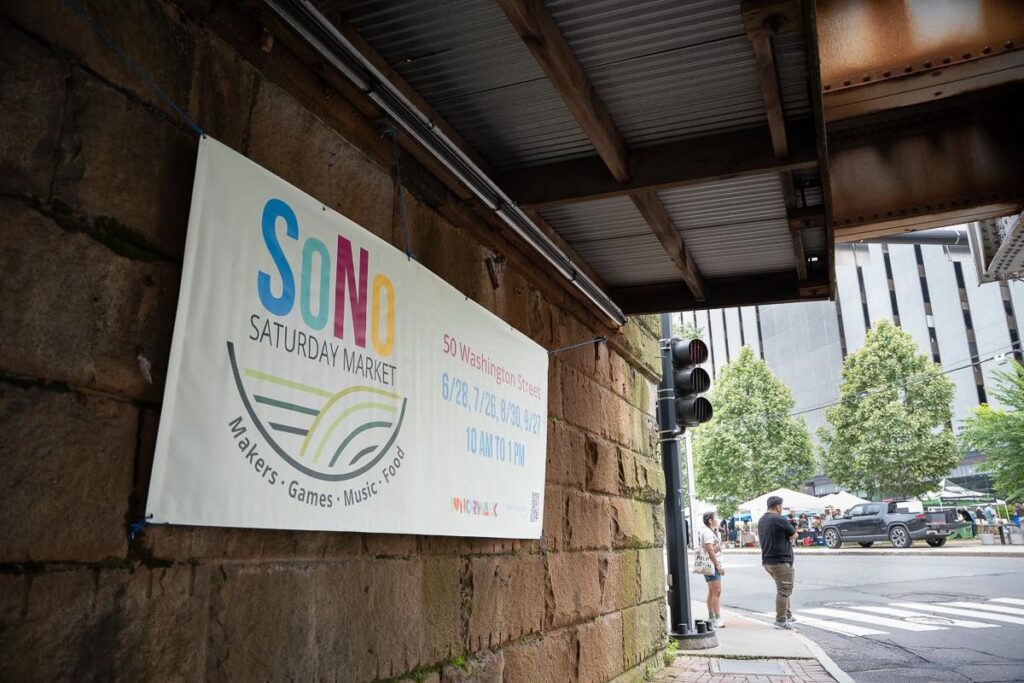 Photo Courtesy of Lori Hillsberg (SoNo Saturday Market 2025)
Photo Courtesy of Lori Hillsberg (SoNo Saturday Market 2025)[/caption]
Fiscal discipline underlies every Norwalk initiative. Strategic capital investments, phased property revaluations, and transparency keep tax rates steady while steering long-term financial health, a practice endorsed by the Government Finance Officers Association.
The City has proven its financial responsibility by maintaining a strong fiscal position through:
- Operating with a balanced budget and healthy reserves to handle unexpected costs, while responsibly borrowing and investing in infrastructure and services that benefit residents long-term.
- Ensuring open financial management by regularly updating residents with detailed financial reports and budget information.
- Implementing policies that encourage economic growth, support local businesses, and attract new enterprises.
A Livable and Environmentally Sustainable City
Norwalk’s 2024 Sustainability and Resilience Plan sets the city on course to become Connecticut’s greenest. Ambitious goals to reduce climate impact, expand green infrastructure, improve flood resilience, and electrify transit are being implemented. The creation of the Office of Sustainability and strong partnerships (such as the transformation of Manresa Island) demonstrate this commitment. Partnerships with organizations like
Manresa Wilds are transforming previously industrial sites into ecological and recreational assets. Sustainable CT recognized Norwalk’s green achievements with Bronze Certification, underscoring the city’s leadership.
[caption id="attachment_2549" align="aligncenter" width="1024"]
 Photo Courtesy of I Love Norwalk CT! Facebook Community (Manresa Wilds Formerly Manresa Island)
Photo Courtesy of I Love Norwalk CT! Facebook Community (Manresa Wilds Formerly Manresa Island)[/caption]
Resident surveys consistently prioritize parks and waterfronts. Recent investments brought new and renovated playgrounds, dog parks, and extended trails. The
Norwalk River Valley Trail contributes to healthy recreation and ecological connectivity, aligning with guidance from the National Park Service and regional trail organizations.
Creating a truly livable community means
prioritizing affordable housing, inclusive neighborhoods, and great public spaces. Norwalk is advancing major initiatives to expand affordable housing, informed by community feedback and in alignment with national guidelines from the
Department of Housing and Urban Development (HUD). New developments and revitalized public amenities ensure quality of life across generations.
A Safe, Walkable and Connected Norwalk
Safety and wellness are citywide priorities. Recent years brought expanded recreation opportunities, new playgrounds, and a comprehensive Safety Action Plan, all helping reduce crime and enhance physical health. Vision Zero policies and initiatives to improve pedestrian and cyclist safety have received recognition from Connecticut’s Department of Transportation.
With a dense urban core and diverse neighborhoods, Norwalk’s commitment to walkability is driven by investments in safe sidewalks, bike infrastructure, and comprehensive mobility planning. Norwalk’s integrated approach ensures safe, accessible movement for all.
[caption id="attachment_2548" align="aligncenter" width="768"]
 Photo Courtesy of Emily Burnaman (Bike, Walk, Roll To School Day 2024)
Photo Courtesy of Emily Burnaman (Bike, Walk, Roll To School Day 2024)[/caption]
The city’s Bike/Walk Commission leads advocacy and design efforts for interconnected, safe, and accessible streets. The city’s Transportation Mobility and Parking Department (TMP) and Complete Streets Ordinance make walking and biking a core focus,
with miles of new sidewalks and bike lanes connecting neighborhoods. As recommended by leading transportation organizations such as Smart Growth America and the National Association of City Transportation Officials, that emphasize safe streets for all ages and abilities.
Additionally,
the NorWALKER program encourages Norwalk residents to increase physical activity and community connection through walking. The Health Department has created detailed walking maps covering various neighborhoods to help people explore the city on foot. Community walks and walking groups provide opportunities to socialize, stay active, and discover new areas.
New for 2025: Norwalk Transit District’s Redesigned Bus Network
A standout achievement in Norwalk’s mission for equitable access and sustainable mobility is the launch of the
Norwalk Transit District’s new bus network, debuting August 11, 2025.
- This redesign transforms the local bus system with simplified routes, increased service frequencies, improved connections to key destinations (including Medical Commons, schools, and job centers), and user-friendly schedules.
- The change follows years of community engagement, study of rider needs, and collaboration with experts. The new network supports Norwalk’s climate action commitments by promoting public transit use, reducing congestion, and lowering emissions.
- The initiative also supports the city’s Safety Action Plan, integrating multimodal options and providing safe, affordable transit for all residents.
Norwalk’s forward-thinking public transit strategy, mirrored in leading cities across the country and lauded by the Federal Transit Administration, positions it as a statewide leader in sustainable transportation options.
Click here to view an interactive map of the new network
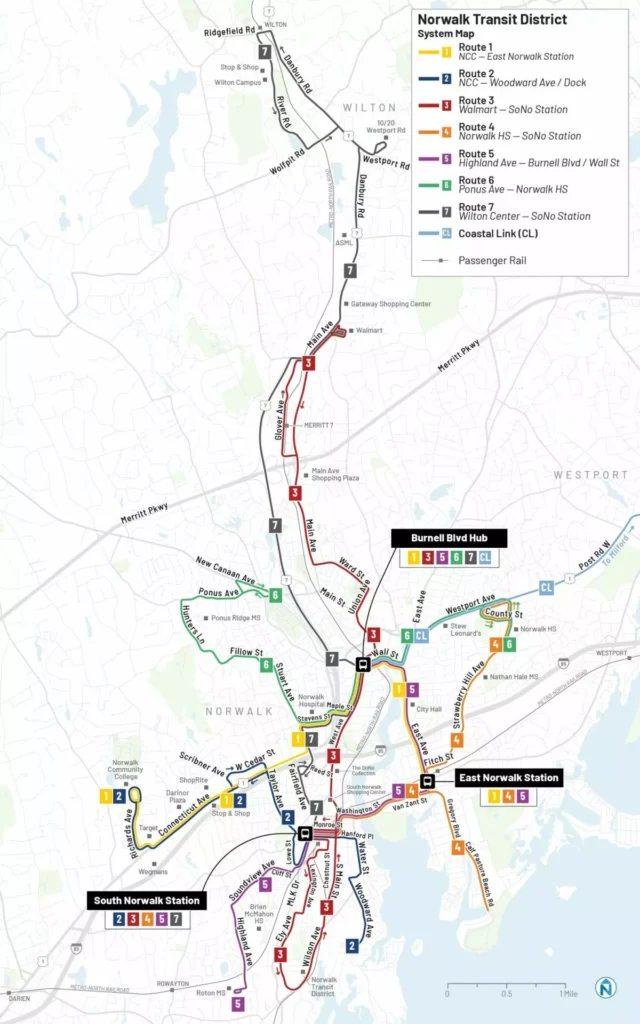
Community Participation: The Foundation of Norwalk’s Progress
Every Norwalker has a voice and an opportunity to help shape the city’s future.
- Attend Meetings and Workshops: These events provide an opportunity to make your comments in person directly to city planners and administrators; details can be found at norwalkct.gov/calendar.aspx.
- Join Boards and Commissions: All Norwalk residents are welcome to apply to become a member of various planning bodies and take part in the decision-making process. Get involved in hands-on policy shaping, apply at apps.norwalkct.org/meetingboard.
- Vote in Upcoming Elections: Your vote powers local democracy, check for details and sample ballots online.
- Contact Representatives: Email, call, or visit city officials to contribute your ideas.
- Volunteer and Support Local Businesses: There are always opportunities available for citizens to help out at a grassroots level, including working at the polls and organizing neighborhood outreach programs. Stay active in grassroots projects and help sustain Norwalk’s diverse, vibrant economy (see the Greater Norwalk Chamber directory).
[caption id="attachment_2551" align="aligncenter" width="1024"]
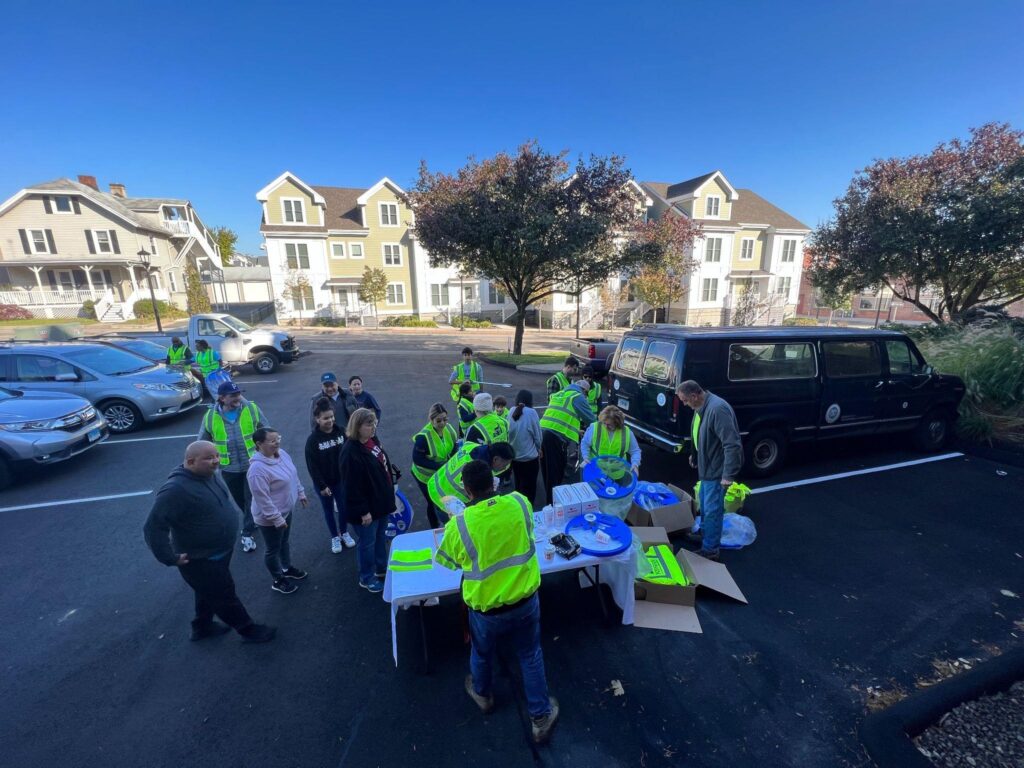 Photo Courtesy of Volunteers of Keep Norwalk Beautiful
Photo Courtesy of Volunteers of Keep Norwalk Beautiful[/caption]
Stay Informed, Get Involved
Keep up with Norwalk Tomorrow’s website for the latest on major projects, upcoming workshops, and innovative city planning news. External resources like Smart Growth America, the U.S. Green Building Council, and the National League of Cities offer additional inspiration on best practices that inform Norwalk’s vision.
In 2025 and beyond, Norwalk’s comprehensive approach (embracing sustainability, transit innovation, fiscal prudence, and community connection) is building a city for everyone. Now is the time to get involved, stay informed, and help ensure Norwalk’s continued success as a model for connected urban progress.
Guest Writer Emily Burnaman, Chair, Norwalk Bike/Walk CommissionCultivating a Sustainable Norwalk: The Rise of Urban Farmers' Markets
Urban agriculture is experiencing steady growth in Norwalk, CT. It offers residents fresh food, fosters community connections, and promotes environmental sustainability. From vibrant farmers markets to community gardens, these initiatives are transforming our city into a greener, healthier place to live.

Embracing Urban Farming in Norwalk
Across the United States, urban agriculture is gaining momentum, and Norwalk is no exception. As awareness of environmental issues and the benefits of locally sourced food grows, urban agriculture has become a cornerstone of our community. Residents are turning rooftops, backyards, and community spaces into productive gardens, creating a more sustainable and self-sufficient lifestyle.
Urban farming in Norwalk extends beyond growing plants. It's about nurturing a healthier, more connected community, too. By engaging in local food production, our residents are strengthening community ties and contributing to environmental stewardship.

Norwalk's Farmers Markets: Fresh Produce and Community Spirit
Norwalk hosts several farmers' markets, serving as hubs for fresh produce, artisanal goods, and community engagement. Here's where you can shop local in 2025:
- SoNo Saturday Market
- When: The last Saturday of every month from June to October, 10:00 AM – 1:00 PM
- Where: 50 Washington Street, Norwalk, CT
- Details: Brought to you by Visit Norwalk, this new market features local farmers and artisans, offering a vibrant space for small businesses to sell their products in the heart of the city during the busy season.
- Norwalk Community Health Center Farmers Market
- When: Wednesdays, June 4 – November 12, 11:00 AM – 3:00 PM
- Where: 120 Connecticut Avenue, Norwalk, CT
- Details: Offers fresh produce and accepts SNAP/EBT benefits.
- Rowayton Farmers Market at Pinkney Park
- When: Fridays, May – November, 12:00 PM – 5:00 PM
- Where: 177 Rowayton Avenue, Norwalk, CT
- Details: Features local vendors and a scenic setting.
- Visit their Instagram
- First Congregational Church Farmers Market
- When: Saturdays, June – October, 9:00 AM – 2:00 PM
- Where: 3 Lewis Street, Norwalk, CT
- Details: Offers a variety of local produce and goods.
- Visit their Instagram
These markets do not only provide access to fresh, nutritious food but also support local farmers and artisans, contributing to Norwalk's economy and community well-being.

Community Gardens: Growing Together in Norwalk
Community gardens are integral to Norwalk's urban farming landscape, offering residents space to cultivate their own produce and connect with neighbors.
- Fodor Farm Community Garden
- Location: 328 Flax Hill Road, Norwalk, CT
- Details: Features over 300 organic garden plots available for seasonal rental. The site also hosts educational programs and events.
- Growing Gardens, Growing Health Program
- When: Tuesdays, June 17 – August 5, 5:30 PM – 7:30 PM
- Where: Fodor Farm
- Details: A free program offering gardening instruction, nutrition education, and cooking demonstrations for Norwalk families.
These gardens and programs empower residents to grow their own food, learn sustainable practices, and build a sense of community.
Benefits of Urban Farming in Norwalk
Urban farming initiatives in Norwalk offer numerous advantages:
- Environmental Sustainability: Reduces carbon emissions by minimizing food transportation and promotes biodiversity.
Food Security: Provides access to fresh, affordable produce, addressing food deserts and improving nutrition.
- Economic Development: Supports local farmers and small businesses, keeping food dollars within the community.
- Community Engagement: Fosters connections among residents through shared gardening spaces and market events.
Get Involved in Norwalk's Urban Farming Movement
Interested in joining Norwalk's urban farming efforts? Here are some ways to participate:
- Shop at Farmers Markets: Support local producers and enjoy fresh, seasonal produce.
- Volunteer at Community Gardens: Lend a hand at Fodor Farm or other local gardens to learn and contribute.
- Start Your Own Garden: Utilize available community garden plots or create a rooftop or backyard garden, adhering to local zoning regulations.
For more information on urban farming initiatives and opportunities in Norwalk, visit the City of Norwalk's official website or explore resources provided by the Norwalk Health Department. By embracing urban farming, Norwalk continues to cultivate a sustainable future, enhancing the health and vitality of our community.
Norwalk’s Mission to Become Connecticut’s Greenest City

Advancing the 2024 Sustainability & Resilience Plan
Norwalk is known for its commitment to sustainability, and now it’s setting an ambitious goal: to become the greenest city in Connecticut! Anchored in the 2024 Sustainability & Resilience Plan and championed by newly appointed Director of Sustainability and Resilience Jodi Trendler, the city is tackling climate change, water conservation, biodiversity, transportation, and equity, one future-conscious project at a time.
From Vision to Action: Green Infrastructure in South Norwalk
In March 2024, Norwalk unveiled a major green infrastructure project focused on installing green infrastructure and a portion of the South Norwalk salt marsh. This 5-acre project, in partnership with Norwalk Land Trust, will identify and design a range of improvements that will aim to remove fill, reintroduce native plants, and install a potential mix of bioswales, rain gardens, tree boxes, pervious pavement, and detention basins to enhance stormwater management and resilience against coastal flooding.
Earth Day 2025: Community in Action
Norwalk’s commitment to environmental stewardship is also seen in its thriving community engagement. Earth Day 2025 brought together residents, schools, nonprofits, and local agencies for a vibrant festival on the Norwalk Green.
The event featured hands-on displays about composting, clean energy, shoreline resilience, and more. In the days leading up to the celebration, nearly 100 youth rowers from local clubs cleaned the Norwalk River, removing more than 1,000 pounds of trash and highlighting how community-driven efforts play a crucial role in sustainability.
Laying the Groundwork: The 2024 Sustainability & Resilience Plan
The 2024 SRP builds on years of environmental work and charts a long-term path toward a resilient, sustainable Norwalk. The plan was officially released as a draft in March 2024 and is rooted in the city’s core values: equity, innovation, preparedness, and collaboration.
Key goals of the SRP include:
- Reducing greenhouse gas emissions
- Expanding green infrastructure
- Enhancing coastal and inland flood resilience
- Investing in EV charging and climate-smart transit
- Creating green workforce opportunities
- Increasing the City’s administrative capacity for sustainability
The plan also outlines how Norwalk will adapt to worsening climate conditions, including rising sea levels, more frequent extreme heat events, and heavier precipitation that strains outdated stormwater systems. As temperatures in Connecticut are expected to increase by 5°F by 2050, Norwalk is planning with urgency and clarity.
“Addressing the threats of climate change cannot wait. It’s our responsibility to take a proactive approach by implementing the steps in this Sustainability and Resilience Plan on behalf of our children, grandchildren, and future generations,” said Mayor Harry Rilling.
Mapping Risk, Planning Smart
To inform its strategy, Norwalk drew on tools like the Connecticut Climate Change Vulnerability Index (CCVI), which revealed areas most at risk from heat and flooding. Unsurprisingly, the city's dense urban core, especially SoNo, City Center, and Manresa Island, ranked high in vulnerability due to limited green space, social stressors, and impervious surfaces.
Rather than viewing these challenges as deterrents, the SRP treats them as guideposts for targeted solutions, such as cooling infrastructure, tree canopy expansion, and flood mitigation that prioritizes equity and access.
Recent Wins on the Path to Green
Norwalk’s commitment to action is already producing results:
Sustainable CT Bronze Certification
Recognizes progress in energy efficiency, transportation, equity, and community engagement.
$1.5M Bond for Norwalk River Valley Trail
Expands walkability, bikeability, and access to green space across neighborhoods.
Creation of Norwalk’s First Office of Sustainability
The new office will lead the implementation of the SRP and oversee climate readiness initiatives throughout the city.
Fleet Electrification & Charging Infrastructure
The City is expanding its hybrid and electric vehicle fleet while expanding public EV charging access.
What’s Next: Building a Future-Focused Norwalk
As the SRP makes clear, sustainability isn’t just about protecting ecosystems—it’s about building systems that protect people. The Plan calls for increased collaboration between city departments, nonprofits, schools, and residents. It envisions a resilient Norwalk where:
- Smart development reduces runoff and supports walkability.
- Heat islands can be mitigated through expanded tree cover and the use of green roofs.
- Public transportation and electric vehicle (EV) options are accessible to all.
- Youth and adults alike can access green jobs and climate education.
These forward-looking initiatives will help reduce flood risk, improve air and water quality, and boost health equity, while preparing Norwalk for a more volatile environmental future.
Norwalk Is Thriving, Sustainably
Once a city that outlined its green ambitions in past planning documents, Norwalk is now bringing those ideas to life. Whether through marsh restoration, climate workshops, Earth Day events, or expanded trail access, Norwalk is proving what’s possible when sustainability is woven into everyday governance and growth.
Want to see how it all connects? Revisit our post on Earth Day in Norwalk to explore how local efforts fit into this big-picture strategy. Together, these actions are creating a healthier, greener, and more resilient Norwalk for today and future generations.A New Chapter in Climate Leadership: Jodi Trendler Steps Into a Pivotal Role
Norwalk is making meaningful moves toward a more sustainable future, starting with new leadership.
Jodi Trendler has just been appointed as the city’s first-ever Director of Sustainability and Resilience, a milestone that signals Norwalk’s growing commitment to tackling climate-related challenges head-on.
From stronger flood planning to smarter environmental policy, her role—and the citywide initiatives ahead—will shape a safer, more resilient future for Norwalk residents.
Who is Jodi Trendler?
Jodi Trendler brings over two decades of experience in sustainability planning, community engagement, and environmental leadership. She has worked with local governments, nonprofits, and regional coalitions to implement practical strategies that create real impact.
In her new role with the City of Norwalk, which sits within the Mayor’s Office, Trendler will collaborate with city departments, the Common Council, and local stakeholders to guide policy development and best practices around sustainability, climate resilience, and equitable planning.
You can read the official announcement here.
 “As the new Director of Sustainability and Resilience, I’m truly impressed by the incredible work in this area that has already been accomplished. From the development of Norwalk’s comprehensive Sustainability and Resilience Plan (SRP), to the implementation of complete streets and the alignment of new zoning with sustainability best practices, it’s clear that Norwalk is leading by example. This progress reflects the dedication and expertise of Mayor Rilling and the City’s leadership and staff, and I’m honored to join such a knowledgeable and committed team. I am very excited about helping tell the full story of Norwalk’s achievements and to advancing new initiatives—like the Flood Resilience Plan—that will make our community even more sustainable, resilient, and future ready.”
“As the new Director of Sustainability and Resilience, I’m truly impressed by the incredible work in this area that has already been accomplished. From the development of Norwalk’s comprehensive Sustainability and Resilience Plan (SRP), to the implementation of complete streets and the alignment of new zoning with sustainability best practices, it’s clear that Norwalk is leading by example. This progress reflects the dedication and expertise of Mayor Rilling and the City’s leadership and staff, and I’m honored to join such a knowledgeable and committed team. I am very excited about helping tell the full story of Norwalk’s achievements and to advancing new initiatives—like the Flood Resilience Plan—that will make our community even more sustainable, resilient, and future ready.”
Why Flood Resilience Matters Now
Like many coastal communities, Norwalk faces increasing threats from storm surge, sea level rise, and inland flooding due to heavier, more frequent rain events. These risks don’t affect all residents equally. Some neighborhoods are more vulnerable due to geography, infrastructure, or resource access.
That’s why the City is investing in a long-term resilience strategy focused not just on response, but prevention, equity, and sustainability.
What Is the Citywide Community Flood Resilience Plan?
One of Trendler’s first major initiatives is supporting The Department of Planning and Zoning's development of a Citywide Community Flood Resilience Plan, a strategic blueprint to help Norwalk prepare for climate-related flooding in coastal and inland areas.
The plan, funded by a grant from the National Coastal Resilience Fund (NCRF), focuses on long-term, nature-based solutions to reduce the risk and impact of flooding events. While the City already has a robust stormwater management program, the new plan emphasizes community resilience, especially in neighborhoods that are most vulnerable to climate change.
The project includes extensive public engagement, including workshops, surveys, and digital feedback platforms, with a commitment to reaching residents of all backgrounds, particularly renters, seniors, low-income families, and others who may face barriers to adaptation. The City is currently reviewing proposals for the Citywide Community Flood Resilience Plan, which will guide long-term adaptation strategies.
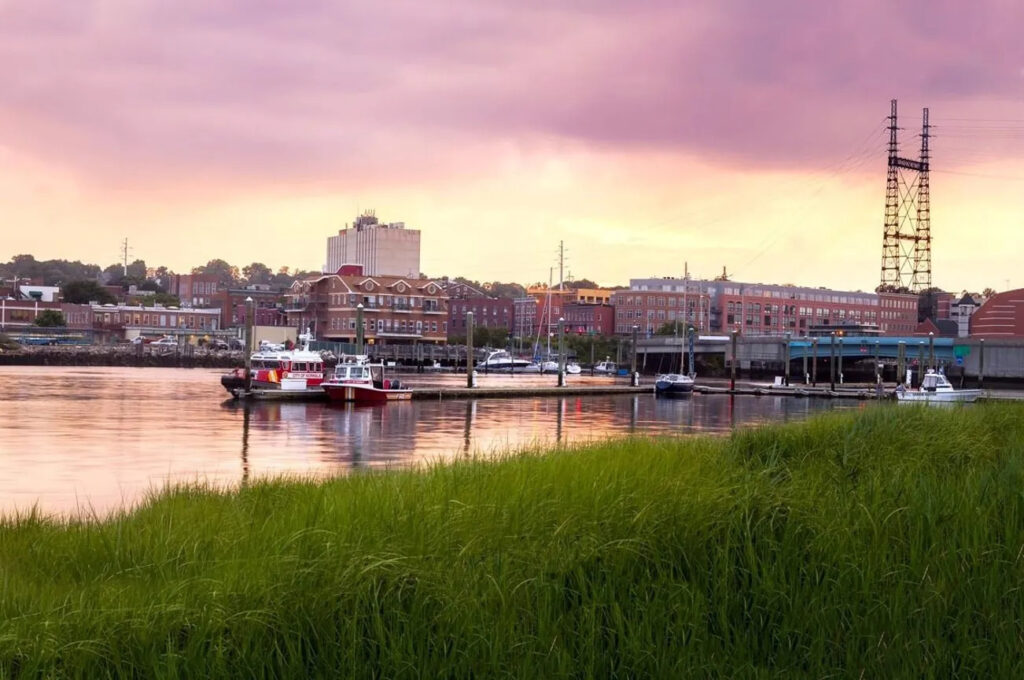
What Comes Next
As the City selects a consultant for the Flood Resilience Plan, Jodi Trendler will help ensure that public engagement remains a central focus. Community workshops and outreach will begin in the coming months, with opportunities for residents to share their insights, concerns, and ideas.
Through Norwalk Tomorrow and other city channels, residents can stay informed and help play a crucial role in shaping the city’s path forward.
Working Together for Norwalk’s Future
The Flood Resilience Plan reflects a growing partnership between City leadership, including the Mayor’s Office, Planning & Zoning, and Norwalk Tomorrow. Jodi Trendler’s role will be essential in ensuring the selected consultant's approach aligns with the City’s goals, values, and environmental vision.
As the project progresses, Norwalk Tomorrow will help keep the community informed—and involved—every step of the way.
How You Can Stay Involved
Norwalk Tomorrow will continue to keep the public informed as the planning process unfolds. From public workshops to plan updates, residents will have opportunities to participate and share their input every step of the way.
To stay up to date on the Citywide Community Flood Resilience Plan and other initiatives, visit Norwalk Tomorrow's website. And don’t forget to welcome Jodi here! Celebrating Earth Day in Norwalk: A Community-Wide Commitment to Sustainability and Action
Despite a rainy forecast, the spirit of community and environmental stewardship was in full force at Norwalk’s Earth Day Festival on Saturday, April 26! Dozens of vendors, city departments, educators, environmentalists, and nonprofit organizations came together on the Norwalk Green to celebrate sustainability, share resources, and connect with residents.
The mission of the Norwalk Earth Day Festival is to host a fun, community-led, and family-oriented event that inspires action toward a sustainable future by providing educational experiences, engaging activities, and showcasing eco-friendly solutions. The goal is to foster a collective commitment to protecting our planet and improving our personal well-being, while also highlighting the work the City of Norwalk is doing to create a greener and healthier city for its residents.
The festival featured
more than 60 exhibitors and vendors offering everything from composting tips to locally grown produce, reflecting Norwalk’s philosophy that meaningful change happens through local partnerships and thoughtful community action.
In the week leading up to Earth Day, nearly 100 young rowers from Norwalk’s local rowing clubs (
Connecticut Boat Club,
Maritime Rowing Club, and
Norwalk River Rowing Association) organized cleanups along the Norwalk River. Through their enthusiasm in collecting over 1,000 pounds of trash, these budding environmentalists truly shared that they ‘
love where they row’. Their efforts reflect the growing momentum among youth to take active roles in preserving natural spaces for recreation and community well-being.
[caption id="attachment_2500" align="aligncenter" width="1024"]

Photo credit: Tracy Craighead[/caption]
A Brief Look Back: The History of Earth Day
First celebrated in 1970,
Earth Day has grown into a global call for environmental awareness and action and is considered to be the dawn of the modern environmental movement. The event was born out of a desire to elevate ecological consciousness and is now observed by over 1 billion people worldwide, making it the largest secular day of protest in the world.
In Norwalk, CT, Earth Day isn’t just about celebrating the planet—it’s about honoring the
ongoing efforts that protect it, year after year.
Initially, the idea of this Norwalk event was born out of the COVID pandemic, when members of the
Norwalk Green Association began discussing ways to build a stronger sense of community. They decided to organize an Earth Day celebration that would spotlight the efforts of local environmental organizations and support the
City’s Keep Norwalk Beautiful cleanup initiative. By 2022, what started as a small, neighborhood-focused event on the Norwalk Green had grown significantly in size and impact, attracting participants from across Norwalk and nearby towns.
As Tracy Craighead, Chair of event says, “For us, this day is all about conveying the hopeful message about the potential for change and the importance of working together as a community because it’s going to take all of us: activists, citizens, businesses, community leaders, artists and governments to create the necessary change that will have a positive impact on preserving the planet for future generations.” And she adds, “I am thrilled about how this grass roots community-led effort has grown through its collaboration with the City, and now our message is getting out to the public in an educational, engaging, and fun way that keeps folks coming back each year.”
Festival Highlights: Collaboration, Curiosity & Connection
Attendees brought enthusiasm and genuine interest to the event. Many vendors reported a steady stream of visitors eager to learn more about everything from native plants and pollinators to clean energy and coastal resilience.
Local farms, city agencies, youth programs, and sustainability organizations all contributed to the festival’s sense of purpose and possibility.
Channel News coverage captured the day's energy, with
Union City Farm owner Patrick Blanchette noting the event’s importance in bringing together like-minded community members.
Additionally, this year’s Earth Day celebration also featured a wide variety of interactive events and experiences, including:
- Eco Trashion Show – A creative fashion made from repurposed materials
- Walks & Guided Experiences, such as:
- Community, History & Nature Walk
- Wall Street Corridor Revitalization Walk
- Forest Bathing Walk with the Norwalk Land Trust
- Spirit Walk with Al Forte
- A Talk with David Pogue: “10 Reasons for Climate Hope…10 Actions You Can Take Now!” at Mill Hill Historic Park
- Children’s Storytime at First Congregational Church
- Tree Planting Ceremony
- Live Music Performances at the gazebo on the Norwalk Green:
Together, these events created a festive and educational atmosphere that invited residents of all ages to connect with nature and each other.
[caption id="attachment_2501" align="aligncenter" width="1024"]

Photo credit: Tracy Craighead[/caption]
A Reflection of Norwalk’s Environmental Goals
The Earth Day Festival also reflects the City of Norwalk’s broader sustainability goals. Under the leadership of Jodi Trendler, the City’s newly appointed Director of Sustainability and Resilience, Norwalk is taking actionable steps toward climate resilience, environmental education, and community-driven planning.
“This event embodies the kind of community connection and education that moves our city closer to its sustainability goals,” said Jodi Trendler, Director of Sustainability and Resilience for the City of Norwalk. “Earth Day is more than a celebration, it’s a reminder that when we work together, we create a lasting impact!”
Events like this serve as both celebration and catalyst, unifying the people and partnerships that will shape a greener, healthier Norwalk for generations to come. They are also a meaningful entry point for younger activists, many of whom are stepping up to participate in city cleanups, lend a hand at exhibitor tables, bring creativity to repurposed lawn sign art, and even take the spotlight in the eco-fashion show at the Earth Day event. Their energy and enthusiasm reflect the event’s growing power to inspire the next generation of environmental stewards.
[caption id="attachment_2502" align="aligncenter" width="881"]
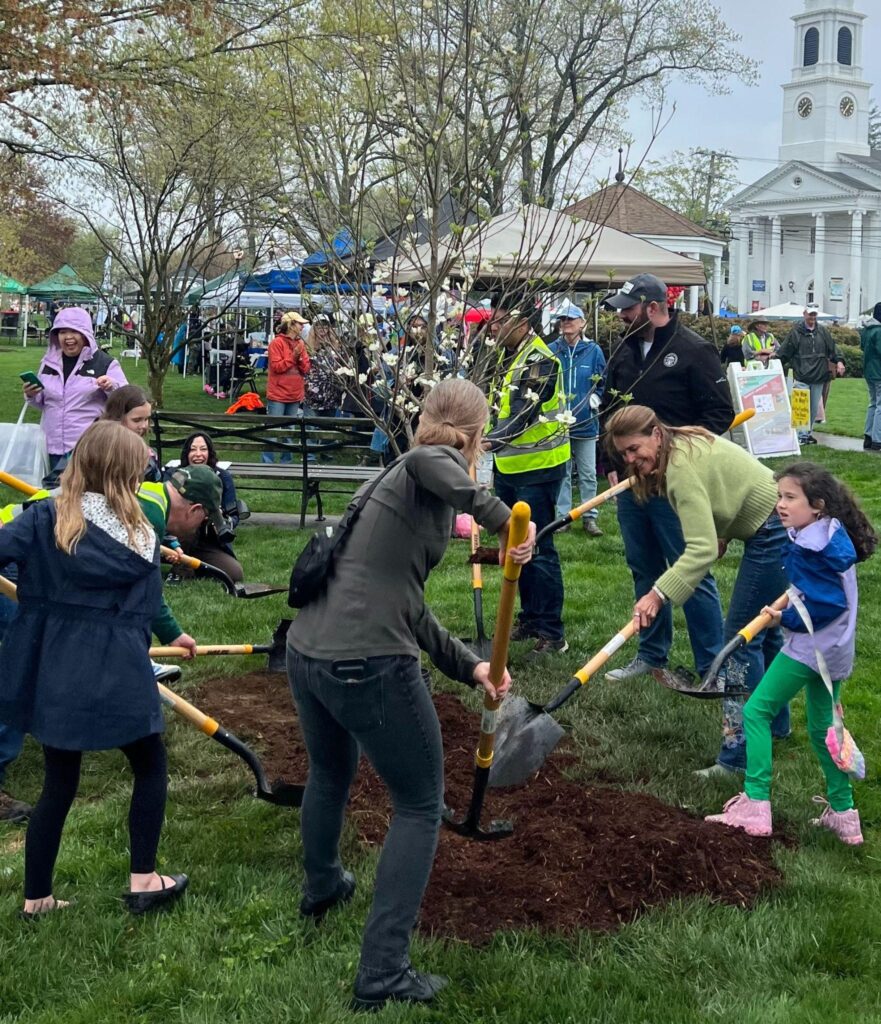
Photo credit: Tracy Craighead[/caption]
Looking Ahead
Those who attended left inspired! With a growing number of grassroots partners, local advocates, and environmentally conscious residents and businesses, Norwalk continues to make sustainability a shared priority. It is this “collective action” that is encouraging the Norwalk community to step up efforts together to combat climate change, protect biodiversity, and preserve our ecosystems.
We’re already looking forward to next year, and hope to see you there!
[caption id="attachment_2503" align="aligncenter" width="768"]
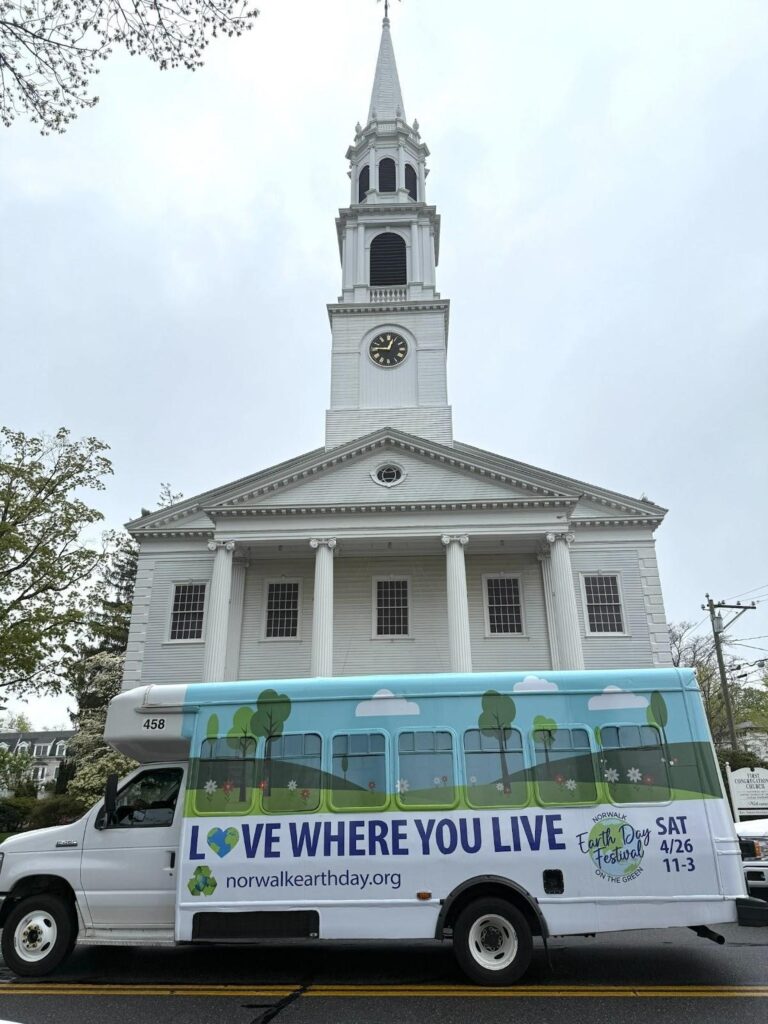
Photo credit: Tracy Craighead[/caption]
Conserving Norwalk’s Water: A Community Approach to Sustainability
Norwalk’s water system plays a vital role in the health of the city’s homes, businesses, and environment. From wastewater management at the Water Pollution Control Authority to everyday conservation reminders, Norwalk is taking active steps to steward its water resources, especially as climate conditions grow more unpredictable.
Understanding Norwalk’s Water Supply
Unlike many communities that rely solely on surface water, Norwalk's water supply is primarily sourced from surface reservoirs, with supplemental groundwater from aquifers. These aquifers require special care and long-term planning to preserve. And with drier summers and heavier rainfall events becoming more common due to climate change, the city continues exploring new ways to conserve water, improve infrastructure, and engage the public.
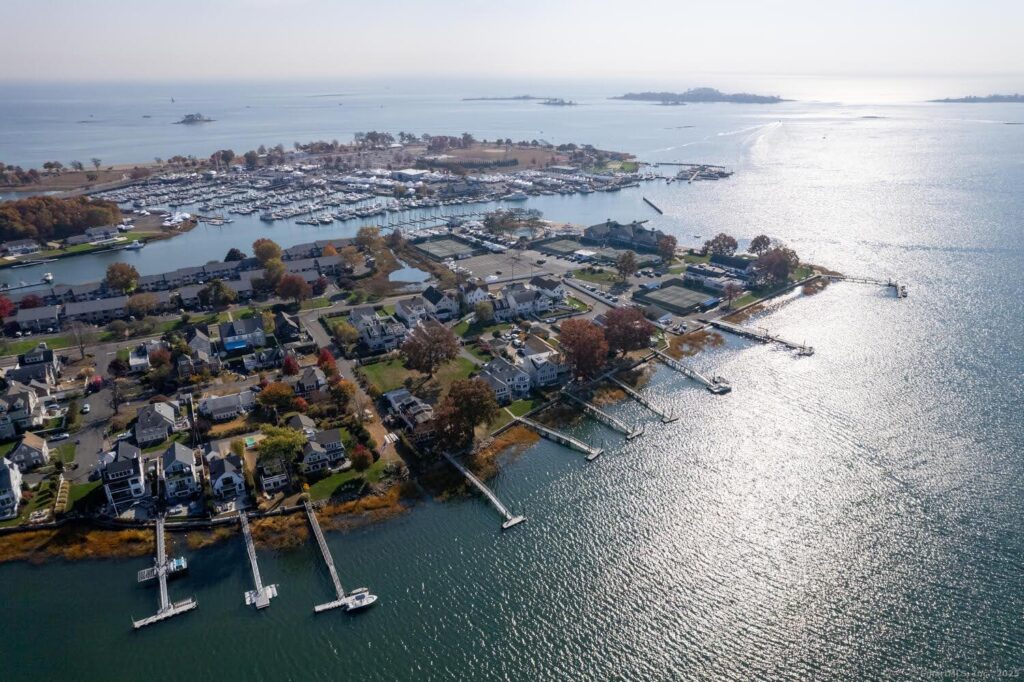
Why Water Sustainability Matters in Norwalk
Water challenges in Norwalk aren’t one-size-fits-all. While the city primarily relies on surface reservoirs, protecting groundwater sources remains critical for long-term resilience. Overdrawing aquifers can lead to lower water tables and future supply risks.
Every gallon saved helps reduce the burden on treatment facilities, stormwater systems, and natural habitats. For residents, conserving water helps:
- Lower monthly utility bills
- Reduce wear on appliances and plumbing
- Support local resilience during droughts or water advisories
- Ensure a reliable supply for future generations
- Sustainability isn't just a citywide goal—it's a way for every household to make a measurable impact.
- Ongoing Conservation Efforts
The
Norwalk Water Pollution Control Authority (WPCA) manages over 200 miles of sewer pipelines and oversees the treatment of millions of gallons of wastewater daily. It works alongside other city departments to ensure the water system is efficient and resilient.
Exciting upgrades are already underway:
- Supervisory Control and Data Acquisition (SCADA) system modernization to improve real-time water monitoring
- Pump station renovations to support stormwater and wastewater flow
- Sewer rehabilitation projects that reduce leaks and groundwater intrusion
These efforts help reduce system strain, protect the Norwalk harbor, and prepare the city for future water demands.
Conservation Starts at Home
While citywide upgrades help build the foundation for long-term sustainability, individual households play a crucial role in supporting Norwalk’s water goals. Every faucet turned off and every leaky pipe repaired adds up over time. In fact, residential water use accounts for a significant portion of daily demand, so conservation at the local level can have a real, measurable impact.
Residents can support Norwalk’s water conservation goals by making smart choices at home. Small steps like installing low-flow fixtures, using rain barrels for irrigation, and fixing leaks promptly can significantly reduce household water use.
While Norwalk’s WPCA focuses on wastewater management, residents can check with local utilities like
South Norwalk Electric and Water (SNEW) for information on any available rebates or efficiency programs that may help reduce overall resource consumption.
Most importantly, residents can also take simple, everyday steps to reduce waste and keep water resources healthy:
- Taking shorter showers
- Running the dishwasher and laundry only when you have a full load
- Fixing leaks in your home
- Installing low-flow toilets in your home or adding a water displacement device
- Shutting off the faucet while brushing teeth and soaping up in the shower
- Collecting rainwater
- Sweeping the patio and driveway instead of using a hose
- If everyone made small changes citywide, it could make a significant impact on our overall water demand.
Citywide Conservation Leadership
Norwalk’s Conservation Office plays a vital role in protecting water resources. The office administers and enforces the city’s Inland Wetland Regulations, which are designed to safeguard watercourses and wetlands from potentially hazardous land uses-especially in public drinking water supply areas. The Conservation Office also provides recommendations on natural resources and open space plans, ensuring that water quality and environmental health remain central to city planning.
Protecting the Norwalk Coastline and Long Island Sound
Norwalk is committed to protecting and improving water quality in Long Island Sound. The city’s Plan of Conservation and Development (POCD) 2019–2029 outlines strategies for managing stormwater, preserving wetlands, and enhancing natural buffers to reduce pollution and runoff into the Sound. These efforts support both environmental health and recreational opportunities for residents and visitors.
View our FAQs for more information.
"The city’s POCD specifically addresses the need to balance growth with environmental protection, emphasizing water resource management and conservation as key priorities for Norwalk’s future."
Looking Ahead: A Sustainable, Water-Smart Norwalk
As dry weather alerts and seasonal restrictions continue, Norwalk is committed to keeping residents informed and involved. The city will continue upgrading systems like the WPCA and promoting conservation campaigns across neighborhoods.
Through thoughtful planning and active community participation, Norwalk is building a sustainable future for its water. By doing our part—from reducing indoor water use to supporting large-scale infrastructure upgrades—we can ensure a stronger, more resilient Norwalk for generations to come.
Stay up to date on Norwalk’s water-related projects and plans by visiting the
Harbor Management Plan and subscribing to our Norwalk Tomorrow newsletter below.
Building a More Livable Norwalk: Advancing Affordable Housing Initiatives
Discover how Norwalk is advancing affordable housing through strategic planning, zoning reforms, and community collaboration. Learn about the City's initiatives to create a more inclusive, livable, and equitable future.
Affordable housing is a cornerstone of Norwalk’s vision for a thriving, inclusive community. As the City continues to grow, it faces the challenge of ensuring housing remains accessible across all income levels. Through strategic planning, innovative policies, and community collaboration, Norwalk, Connecticut, is addressing these challenges head-on to create a more livable and equitable city.

Understanding Norwalk’s Affordable Housing Landscape
The City of Norwalk recognizes that housing affordability is critical for economic vitality and social equity.
According to the City’s Affordable Housing Action Plan (AHAP), affordable housing is defined as units that cost no more than 30% of a household’s income. This definition underpins the City’s efforts to assess housing needs and implement solutions that benefit current and future residents.
To develop Norwalk’s AHAP, the City:
- Conducted a comprehensive inventory of existing housing stock.
- Analyzed affordability gaps and population trends.
- Projected medium and long-term housing needs.
- Developed strategies to safeguard affordability while promoting economic opportunities
- Implemented objective design standards to streamline approvals for housing projects.
- Expanded partnerships with nonprofit developers.
- Explored public land for housing and continuing to apply for state funding.
The planning process included several public participation opportunities, including interviews with local housing stakeholders, round table discussions with residents, housing needs webinars, and in-person events. In addition, the Affordable Housing Plan Advisory Committee held pop-up events at various city events and released a joint survey with the
Norwalk Redevelopment Agency on housing.
This process also included a
housing needs assessment, which played a crucial part in developing the recommendations and actions needed for Norwalk. This assessment was composed of extensive community input, as well as data analysis.
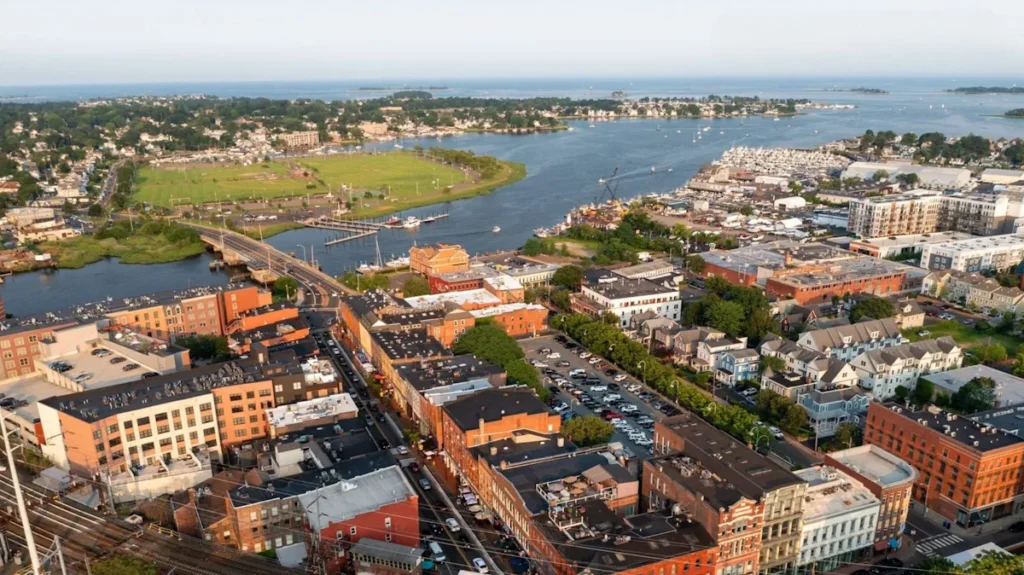
Recommendations of the AHAP were consolidated into four categories:
- Zoning and Land Use, such as revising zoning regulations
- Public Private Partnerships, such as constructing new affordable housing units through underutilized City-owned land
- Tax and Financing Innovations, such as a local tax incentive to facilitate affordable housing, like senior or condominium development.
- Federal and State Advocacy, such as lobbying to change barriers to unit types and expand affordable housing programs.
To learn more about action items, see pages 5-1 through 5-9 of the
AHAP.
What Norwalk Has Already Started to Tackle
Norwalk has already taken meaningful steps toward increasing access to affordable housing.
For example, the
Planning & Zoning Commission has approved amendments to the workforce housing regulations to allow two bedroom units to count as one and a half workforce units. This adds an incentive for developers to designate more two bedroom units, which was an identified demand in the needs assessment.
The Planning & Zoning Commission is also contemplating allowing recertified workforce households to increase their income up to 90% of the State Median Income (SMI), targeting households with incomes that may not qualify for market-rate or affordable units.
On the legislative front, the Planning & Zoning Department is working on three proposals, including:
- Lobbying for state legislation to promote construction of grocery stores that provide fresh produce and groceries to underserved communities through tax and zoning incentives. Access to food is an important resource in densely populated areas that are walkable.
- Lobbying for state legislation to allow various municipalities and the county government combined to take ownership of homes that are abandoned, blighted, or otherwise distressed and rehabilitate the structures. The buildings would be sold via a lottery system to a family earning no more than 80% of the county’s median income.
- Identifying and revising several state legislation items regarding condominiums and eliminating hurdles to homeownership.
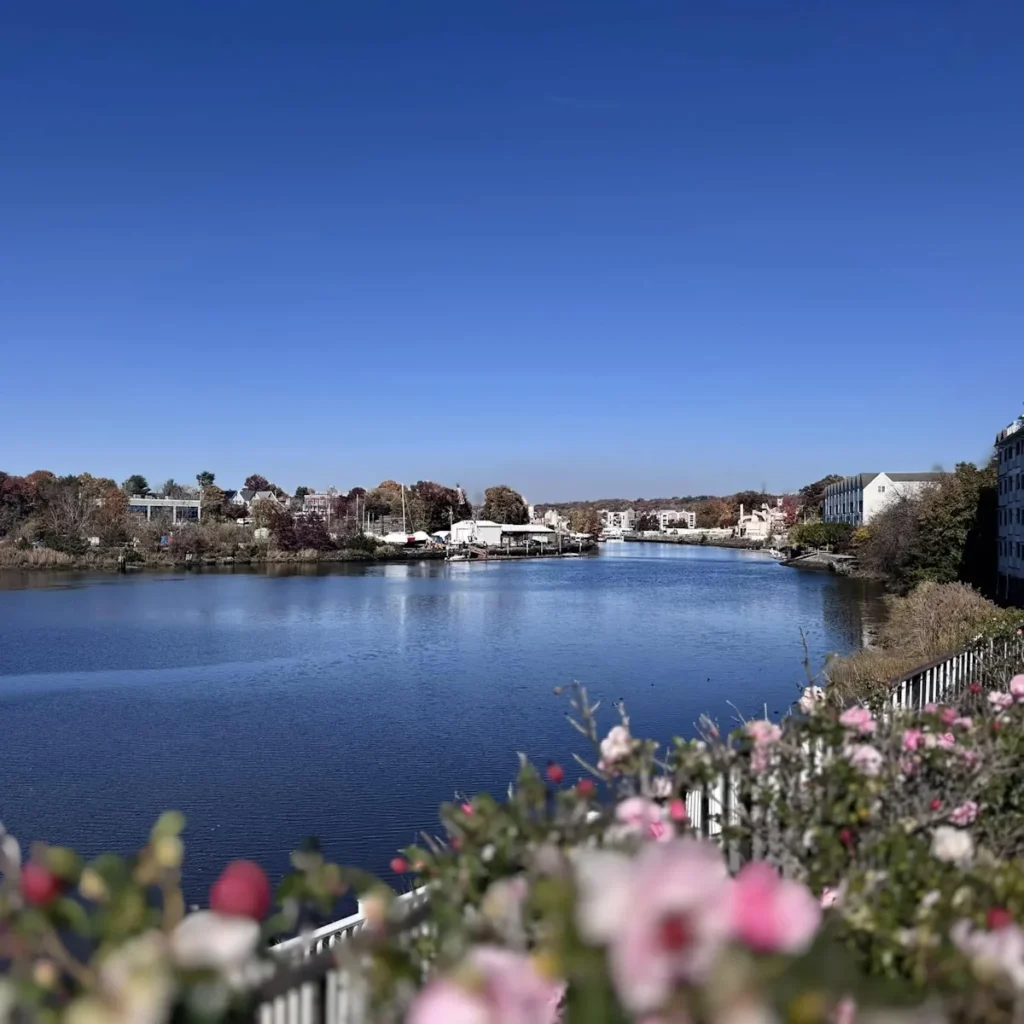
Th
e City’s Ad Hoc Affordable Housing Committee of the Common Council has been a very active group, preemptively
pushing the action of the AHAP forward. In January, the Committee invited a guest speaker on
Community Land Trusts to its meeting, and they plan to have a guest speaker in the future on tax incentives. Tentative guest speaker on
tax incentives.
The Committee was instrumental in establishing the City’s
Affordable Housing Account, which is to be used for the construction of affordable housing.
The City has also developed an “affordable housing tracker” that will help with administering and monitoring the process of all the action items in the AHAP. For more information about the affordable housing tracker, please contact the
Planning and Zoning Office for questions.
What’s Next? A Vision for Inclusive Growth
In addition to tasks Norwalk has already kick-started, the next steps focus on expanding affordable housing options while fostering community engagement. The top five high-priority initiatives include:
- Continuing to expand inclusionary zoning provisions to further incentivize the development of affordable and moderate-income housing units, including two-bedroom and family-sized units, which are in high demand. Incentives could include increased density bonuses, increased maximum height, and financial incentives, such as fee waivers and tax abatements.
- Evaluating City parcels for potential affordability housing projects.
- Developing a program to preserve and update “naturally affordable” units in exchange for deed restricted affordable units.
- Evaluating an affordable housing property tax incentive for qualified affordable housing units.
- Advocating for more government funding for public and affordable housing.
The City recognizes that homeownership is a crucial component of long-term affordability, with several key goals in mind. These include exploring opportunities for new low-interest or forgivable loan programs to provide financial assistance for affordable housing developers, rehabilitating naturally affordable units, and providing financial assistance to first-time homebuyers who meet income eligibility guidelines.
The City is exploring
“missing middle” housing—multi-unit dwellings like duplexes and townhomes that bridge the gap between single-family homes and large apartment complexes. These housing types are crucial for creating walkable neighborhoods and providing affordable options for middle-income residents.

Spotlight on Accessibility and Equity
Ensuring equitable access to affordable housing remains a top priority.
The Fair Housing Advisory Commission plays an essential role in promoting transparency and inclusivity in all city-led initiatives. By addressing barriers related to race, disability, income, and family status, the commission helps build trust within the community.
The Norwalk Redevelopment Agency also supports this mission by utilizing grants that preserve naturally affordable housing units, ensuring long-term affordability for residents.
More Than Housing: Enhancing Livability, Workability, and Appeal
Norwalk’s housing strategy isn’t just about shelter—it’s about shaping the future of the City. The plan ties directly into larger equity and economic vitality goals by creating a diverse housing stock that accommodates the needs of its diverse population.
Norwalk’s approach aligns with its vision of becoming an inclusive, sustainable, and economically vibrant city. A diverse and affordable housing stock supports local employers, reduces commute times, and attracts a vibrant workforce,
enhancing the City’s workability and visitor appeal.
From zoning to state-level advocacy, the City of Norwalk is positioning itself as a leader in comprehensive community development.
Building a Better Norwalk, Together
Norwalk’s journey toward affordable housing is far from over. The City invites residents to participate in shaping its future through forums and discussions, which
anyone can attend here.
Together, we will build a Norwalk where everyone has the opportunity to thrive. Stay informed about upcoming initiatives by visiting
Norwalk Tomorrow’s website and subscribing to our Newsletter.
Top Ten Things That Attract People to Norwalk, CT
Choosing where to live or visit is a big decision, and Norwalk, Connecticut, consistently stands out as a premier choice. With a vibrant mix of coastal charm, rich history, diverse dining, and family-friendly attractions, it's no wonder CT Insider, Fortune Magazine, and Livability have named
Norwalk, CT, a top city to live in.
So whether you're seeking a weekend getaway or considering a new place to call home, Norwalk has something for everyone.

1. Safety and Quality of Life
Safety is a key factor when choosing where to live or visit. Norwalk boasts a crime rate significantly lower than the national average, making it a secure place to explore and raise a family.
The Norwalk Police Department's community policing programs have been instrumental in maintaining safe neighborhoods.
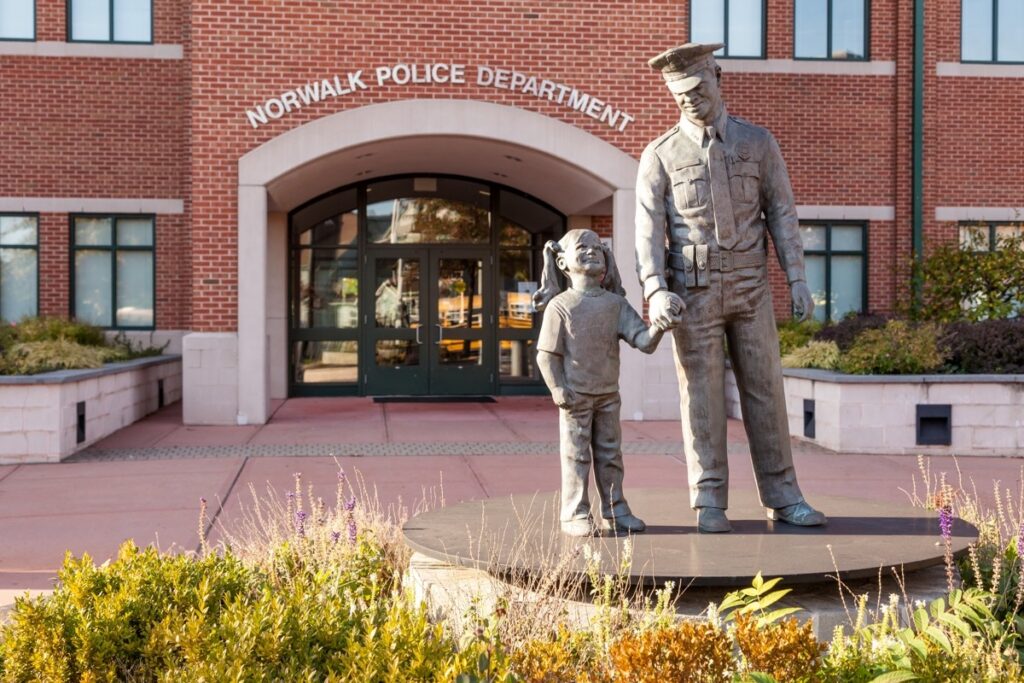
2. Access to Great Jobs and Economic Opportunities
Norwalk's economy thrives with a mix of Fortune 500 companies, local businesses, and innovative startups. The city's proximity to New York City and access to robust infrastructure attract professionals across sectors. Major employers include
Booking Holdings,
Xerox Corporation, and a bustling retail and service industry.
Norwalk, a city built on diversity and local business, is also proud of its
Small Business and Main Street Program. Norwalk has become a source of innovation, inspiration and a desirable destination for
new and developing businesses founded by creative thinkers and doers. For entrepreneurs, Norwalk offers resources through the
Greater Norwalk Chamber of Commerce and the
Business Development Center to support small business growth.
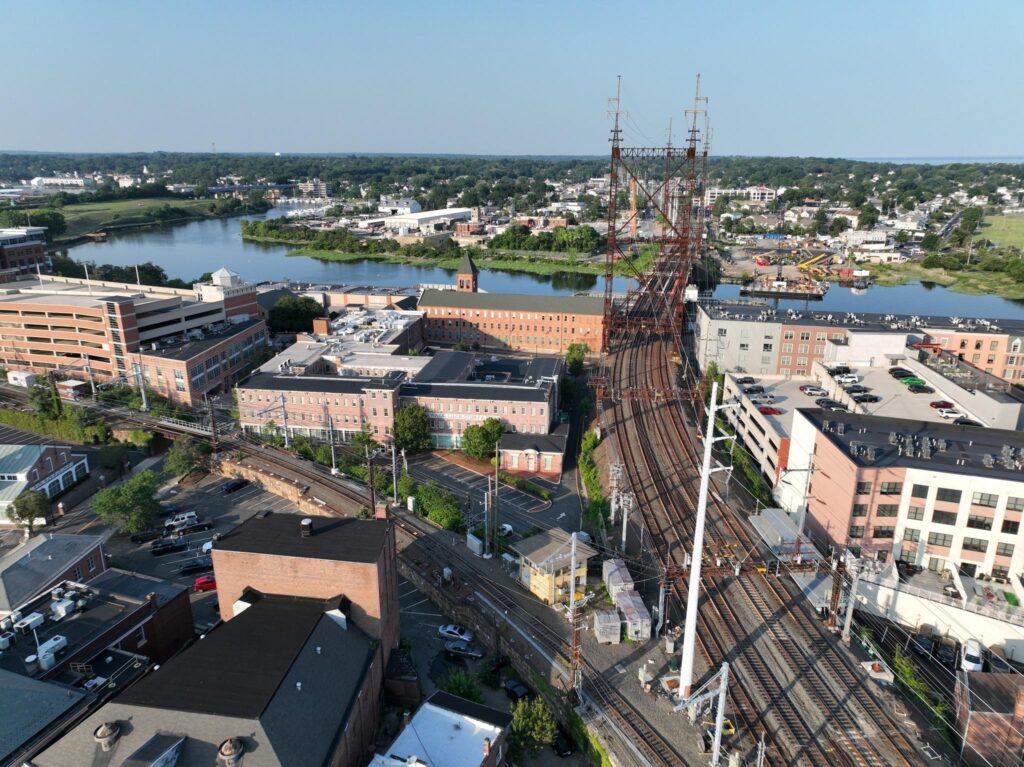
3. Abundant Open Spaces and Waterfront Areas
Outdoor lovers flock to Norwalk's extensive parks and beaches. Calf Pasture Beach, with its sweeping views of Long Island Sound, is perfect for sunbathing, kayaking, or a family picnic. Cranbury Park offers hiking trails and dog-friendly areas, while Veterans Memorial Park features a marina and walking paths. Explore the scenic
Norwalk River Valley Trail (NRVT), an expanding network of multi-use trails for biking and walking.
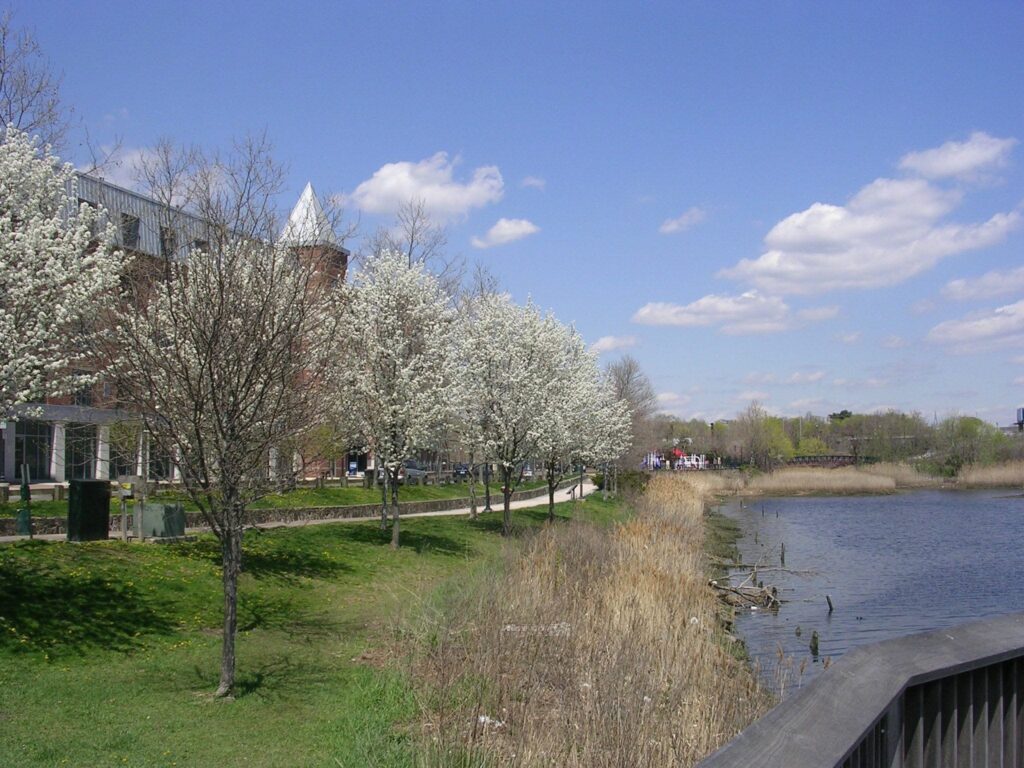
4. Cultural Attractions and the Arts Scene
Norwalk's cultural vibrancy is evident in its numerous arts venues and festivals. The Wall Street Theater hosts concerts, plays, and comedy shows, while the Rowayton Arts Center and Maritime Garage Gallery showcase local talent. Each August, the
SoNo Arts Festival fills the streets with art, music, and the whimsical Puppet Parade. For classical music enthusiasts, the
Norwalk Symphony Orchestra delivers performances year-round.
5. Unique Attractions: Maritime Aquarium and Lockwood-Mathews Mansion Museum
No visit to Norwalk is complete without a trip to the
Maritime Aquarium. With over 2,700 marine animals, interactive exhibits, and a 4D theater, it's a must-see for families and marine life enthusiasts. History buffs will love touring the
Lockwood-Mathews Mansion Museum, a Gilded Age masterpiece featuring grand architecture and rotating historical exhibits.
[caption id="attachment_2419" align="aligncenter" width="1024"]

Photo Credit: Visit Norwalk[/caption]
6. Year-Round Events and Festivals
Norwalk's events calendar is packed with festivities that attract visitors year-round. The Norwalk Oyster Festival each September celebrates the city's maritime heritage with live music, carnival rides, and an abundance of seafood hosted by the
Norwalk Seaport Association. Seasonal highlights include Norwalk Earth Day, Pride in the Park, the SONO Arts Festival, the Norwalk NICE Festival, Halloween Nightfair, and the Winter Holiday Tree Lighting Ceremony. Visit the
Norwalk Events Calendar for a complete list of activities.
[caption id="attachment_2420" align="aligncenter" width="1025"]

Photo Credit: Norwalk Seaport Association[/caption]
7. Diverse Culinary Scene and Local Breweries
Foodies will find plenty to savor in Norwalk's vibrant dining scene. South Norwalk (SONO) offers everything from fresh seafood at Sono Seafood to innovative farm-to-table dishes at Washington Prime. Beer lovers can unwind at local breweries like
Spacecat Brewing Company and East Rock Brewing Company. With 28 restaurants recognized by
Connecticut Magazine's Best Restaurants 2025, there's no shortage of top-tier dining experiences.
8. Transportation and Mobility Options
Conveniently located along the I-95 corridor and the Merritt Parkway, Norwalk offers easy access to neighboring cities and New York City. The
Metro-North Railroad's New Haven Line provides frequent, affordable trains for commuters and travelers. Residents value the city's commitment to pedestrian and bike-friendly infrastructure, with ongoing efforts to expand bike lanes and improve walkability.
For those driving into the city,
Park Norwalk manages several convenient parking garages and lots, including the Haviland Deck, North Water Street Lot, and Webster Lot. These facilities offer affordable daily rates and monthly permits, providing easy access to popular destinations like the SONO district and Maritime Aquarium.
Pedestrians and cyclists also benefit from Norwalk's growing infrastructure.
The Transportation, Mobility, and Parking (TMP) department actively works on expanding bike lanes and improving sidewalk accessibility. Whether you prefer to drive, bike, walk, or take public transportation, Norwalk’s diverse mobility options make getting around town convenient, safe, and environmentally friendly.

9. Top-Rated Schools and Libraries
Education is a priority in Norwalk, home to 22 primary and secondary schools, including highly regarded magnet programs and private institutions.
CT State Community College Norwalk, previously known as Norwalk Community College, is renowned for its academic and vocational programs. Public libraries like the
Norwalk Public Library and
Rowayton Library provide invaluable resources, free programs, and community spaces.
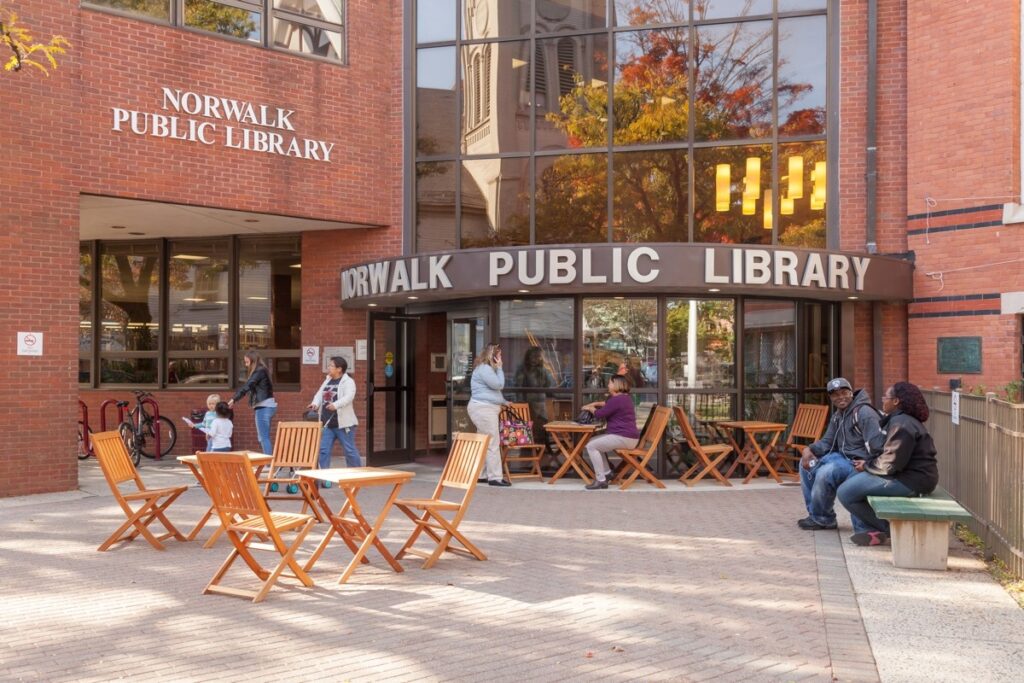
10. Engaging Community and Quality Infrastructure
Norwalk's well-maintained roads, bridges, and utilities contribute to its high quality of life. Residents enjoy a strong sense of community through active neighborhood associations, sports leagues, and volunteer opportunities. The city's investment in infrastructure ensures smooth transportation and economic development.
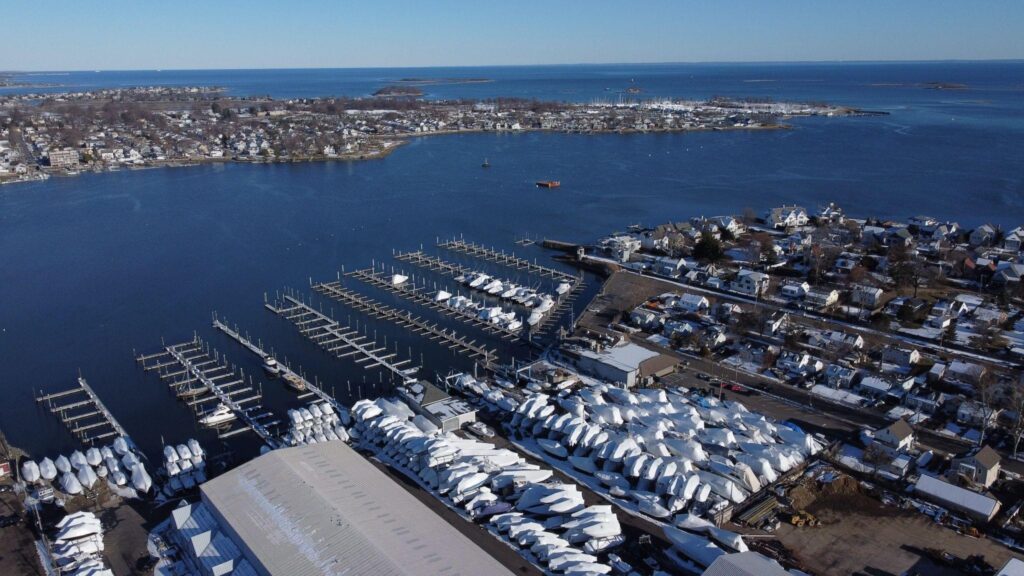
Plan Your Trip to Norwalk Today!
Whether you're visiting for the weekend or considering a permanent move, Norwalk, Connecticut has something to offer everyone.
Subscribe to our newsletter below for the latest news and updates from Norwalk Tomorrow!
Spotlight on Norwalk's Historic Districts
A historic district is a locally, state, and/or nationally recognized area of culturally and architecturally significant buildings. These buildings are usually at least 50 years old, contain many original features, and are often associated with important people, events, or architectural styles.
First incorporated as a town in 1651 and later as a city in 1893, the City of Norwalk was known for its booming oyster farming industry. Today, Norwalk’s many historic districts help to preserve its cultural and architectural legacy.
Nationally-Recognized Historic Districts
[caption id="attachment_2386" align="aligncenter" width="720"]

Photo Credit: Mike Mushak[/caption]
Five Mile River Landing Historic District: Listed in 2009, this 7.2-acre district features Greek Revival, Federal, and Late Gothic Revival buildings.
Haviland and Elizabeth Streets-Hanford Place Historic District: Listed in 1988, this 4.2-acre district features buildings in Italianate, Second Empire and Queen Anne styles.
Norwalk Green Historic District: Listed in 1987, this 35-acre district features a variety of historically significant architectural styles including Colonial, Greek Revival, Second Empire, Federal, Italianate, Colonial Revival, American Four-Square, Queen Anne, Bungalow, Shingle, Stick, Georgian Revival and Gothic Revival.
Rowayton Depot Historic District: Listed in 2019, this 68-acre district features historically significant architecture, community planning and development, and transportation features.
Silvermine Center Historic District: Listed in 2009, this 100-acre district features buildings in Federal, Colonial, Greek Revival, Queen Anne, and Colonial Revival styles.
[caption id="attachment_2389" align="aligncenter" width="720"]

Photo Credit: Connecticut Historical Commission[/caption]
South Main and Washington Streets Historic District: Also known as the SoNo Historic District, this 5.5-acre district, featuring historically significant homes, businesses, and a theater, was first recognized in 1977.
The Lodges Historic District: Located at 68 and 70 South Main Street, this small historic district was designated in 2020 due to its cultural significance. These buildings served as social meeting halls for two fraternal orders, the Loyal Order of Moose and the Independent Order of Odd Fellows.
Verneur Pratt Historic District: Listed in 2011, this 2.8-acre district was once home to Verneur Edmund Pratt, who invented the optigraph, an early microfilm reader.
Wall Street Historic District: Recognized in 2009, this 5.7-acre district features buildings from Italianate, Romanesque, Spanish Colonial Revival, Classical Revival, and Moderne styles.
[caption id="attachment_2390" align="aligncenter" width="720"]
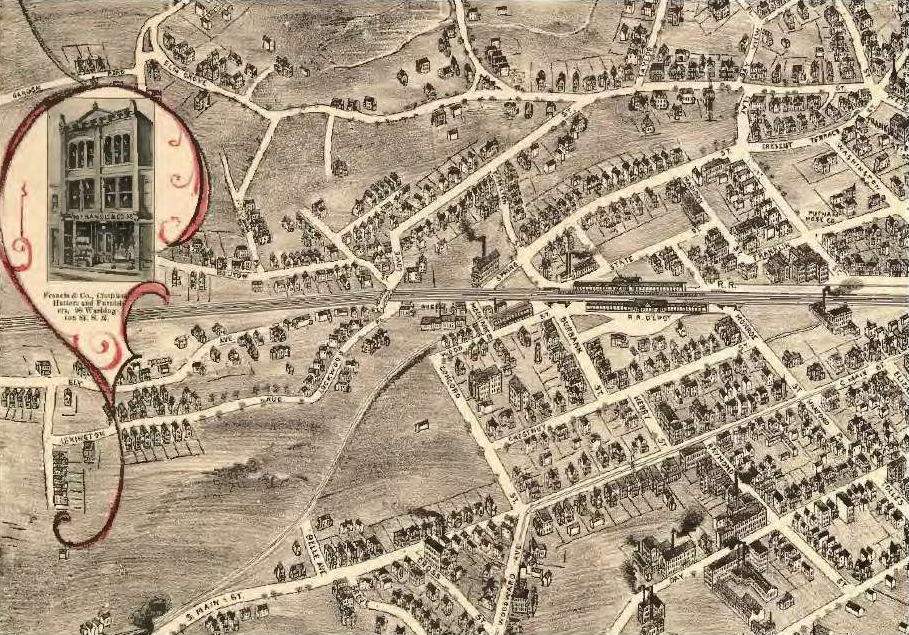
Photo Credit: The Cecil Group for the Norwalk Redevelopment Agency[/caption]
Whistleville Historic District: Listed in 2021, this district encompasses an 84-acre area around the South Norwalk train station. The railroad played a pivotal role in the city’s history as a distribution center for commerce. Historically home to immigrants from Hungary and Italy who worked in the city’s factories, the Whistleville Historic District features many historically significant homes and two churches.
Village Creek Historic District: Established in 1949 as one of the first racially integrated planned communities in the U.S., Village Creek is a 37-acre neighborhood featuring Modernist architecture and shared open spaces like a marina, playground, and private beach. Designed with a commitment to inclusivity, the community overcame early real estate and financial barriers, maintaining its distinct mid-century character and social progressivism.
Oysterman’s Row Historic District: Located along the Five Mile River, this district is known for its collection of 18th and 19th-century homes, which reflect the architectural styles of the period, including Colonial, Federal, and Greek Revival. These homes, originally built by sea captains and merchants, tell the story of Norwalk’s once-thriving shipbuilding and trading economy. The river provided ideal conditions for oyster farming, an industry that shaped the local economy and community identity for generations.
[caption id="attachment_2391" align="aligncenter" width="723"]

Photo Credit: Connecticut Historical Commission[/caption]
State-Recognized Historic Districts
- West Main Street Historic District: Listed in 2005
- Pudding Lane Historic District: Listed in 2005
- Camp Street Historic District: Listed in 2007
In addition to historic districts, the City of Norwalk is home to several significant landmarks.
National Historic Landmark: Lockwood-Mathews Mansion Museum
A stunning example of Second Empire architecture, this National Historic Landmark represents 19th-century wealth and innovation. Considered one of the earliest and most significant examples of a Second Empire home in the nation, the Lockwood-Mathews Mansion was built from 1864-1868 by railroad tycoon LeGrand Lockwood.
Well ahead of its time, the mansion featured indoor hot and cold plumbing, gas lighting, ventilation, and a central heating system that burned a ton of coal a day. Later owned by the Mathews family, the estate was sold to the city of Norwalk in 1941. The mansion became a National Historic Landmark in 1971, after a group of local preservationists saved the building from demolition.
Mill Hill Historic Park
Overseen by the Norwalk Historical Society, Mill Hill Historic Park is home to several historic buildings. The Norwalk Town House, built in 1835, served as the town’s gathering place and administration building. The Governor Fitch Law Office, c. 1740, was once part of Governor Thomas Fitch’s home. It has been reconstructed at Mill Hill as a law office.
The Downtown District School House, built in 1826, was a school until 1871. A century later, it was relocated to Mill Hill and restored. Also included in the park is Norwalk’s third oldest cemetery, the Mill Hill Burying Ground; a building from A. E. Smith & Sons Pottery Company, known as The Lockup; and a barn from 1880.
The park grounds are open year-round, from sunrise to sunset. The historic buildings are open during special events and by appointment for group tours, which are offered from May - September.
[caption id="attachment_2392" align="aligncenter" width="720"]

Photo Credit: Norwalk Earth Day 2024[/caption]
The Norwalk Green
Norwalk Green is a public gathering place that dates back to the 1600s. Each year, a Summer Concert Series and Annual Holiday Tree Lighting are held in the park. Norwalk Green can also be rented for private events.
Overlooking the Green are two historic churches, St. Paul’s Episcopal Church (c. 1930) and the First Congregational Church (c. 1917). The churches hold seasonal farmers' markets.
Adaptive Reuse
[caption id="attachment_2398" align="aligncenter" width="772"]
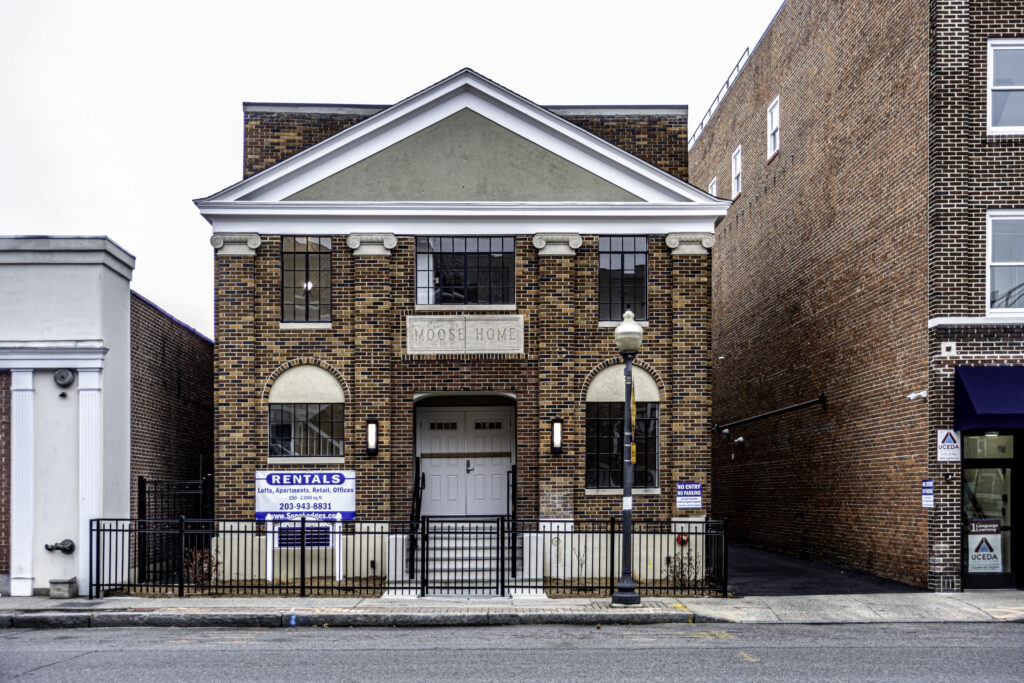
Photo Credit: Tod Bryant[/caption]
Not all historic buildings become museums. In the SoNo community, there are many great examples of adaptive reuse of historic buildings. The Maritime Aquarium was once an abandoned ironworks factory from the 1860s. The SoNo Lodges, featuring lofts, apartments, and workspaces, were once social meeting halls for two fraternal orders, the Loyal Order of Moose and the Independent Order of Odd Fellows. The Brim & Crown apartments were once the Hat Corporation factory from 1929 and Shirt Factory Lofts were once the Le Roy Shirt Factory from 1921.
Preservation Efforts in Norwalk
Maintaining Norwalk’s historic character is a community effort. Local government, non-profit organizations and residents alike all play a role in preserving the city’s history. Some key players in this effort include:
Norwalk Historical Society: A non-profit organization incorporated in 1899 to research, preserve, and promote interest in the history of Norwalk, the Historical Society’s educational exhibits, programs and lectures highlight Norwalk’s rich history and diversity. The Norwalk Historical Society manages and operates the Norwalk Historical Society Museum and Mill Hill Historic Park.
Norwalk Preservation Trust: Founded in 2003, Norwalk Preservation Trust is a non-profit organization that advocates for Norwalk’s architectural heritage and serves as a preservation resource for property owners, residents, and developers, as well as other organizations and government agencies.
Historic Facade Improvement Grant Program: This program provides financial assistance for restoring and maintaining the exterior facades of historic buildings.
Learn more here.
Historic Preservation Regulations: These approved regulations aim to further protect Norwalk’s historic structures and districts.
View pages 314-315 in article 4 here.
Norwalk Preservation Trust
The Norwalk Preservation Trust has been working to preserve Norwalk’s historic buildings and neighborhoods, the architectural legacy, since 2002. The Preservation Trust works with homeowners, developers, and business owners, as well as state and local governments, to provide advice and support on historic preservation issues. The efforts have supported an update of the Norwalk Historic Resource Inventory and some of the historic preservation elements of Norwalk’s Plan of Conservation and Development. The Trust worked to establish Norwalk’s demolition delay ordinance to allow property owners time to consider preservation over demolition, and the Norwalk Trust has invoked that ordinance when necessary. The Norwalk Preservation Trust have led 13 tours of Norwalk’s historic buildings and sponsored many lectures and workshops. These efforts and others have earned NPT recognition and awards from the U.S. Congress, the Connecticut General Assembly, the Governor of Connecticut, Preservation Connecticut, and the City of Norwalk. NPT is always looking for volunteers, members, and even those willing to serve on the Board of Directors. To learn more about NPT and how to support historic preservation in Norwalk,
visit thier website.
Why It Matters
“Norwalk is a very old city, but little remains of our early history. What is left of our historic buildings, neighborhoods and streetscapes tell the story of the last three and a half centuries of our city and its residents. Streets lined with old buildings, or even a single charismatic house, are the soul of a community. When we have been away, they welcome us back and let us know that we’re home. They hold stories that most of us will never know, but their presence alone speaks to us of place and community. The more of these buildings we lose, the more we lose what makes Norwalk - Norwalk.” — Tod Bryant, President of the Norwalk Preservation Trust.
What You Can Do
- Join and support the Norwalk Preservation Trust, the Norwalk Historical Society or Historic Rowayton
- Have your historic house plaqued by the Norwalk Historical Society
- Join or follow online Preservation Connecticut, statewide historic preservation nonprofit, Connecticut Preservation Action, a statewide lobbying nonprofit with a Have your historic house plaqued by the Norwalk Historical Society and the National Trust for Historic Preservation, The National Historic Preservation Organization
- Follow the news of historic preservation-related topics and support them.
Stay Connected & Support Historic Norwalk
Norwalk’s historic districts and landmarks tell the story of our city’s past while shaping our future. By preserving these sites, we ensure that future generations can appreciate Norwalk’s architectural and cultural heritage.
Want to stay updated on preservation efforts, historic events, and volunteer opportunities?
Sign up in the footer below for updates from Norwalk Tomorrow and be part of the movement to protect our city’s history!
 Photo credit to Norwalk Redevelopment Agency
Photo credit to Norwalk Redevelopment Agency
 Photo credit to: Norwalk Hour
Photo credit to: Norwalk Hour
 Photo credit to:Visit Norwalk
Mathews Park Mobility Enhancements
Mobility improvements are being made to ensure better access into Mathews Park, connecting recreational space with neighborhoods and downtown, and improving the experience for pedestrians, cyclists, and transit riders alike.
Details on both initiatives can be found at norwalkredevelopmentagency.org.
Photo credit to:Visit Norwalk
Mathews Park Mobility Enhancements
Mobility improvements are being made to ensure better access into Mathews Park, connecting recreational space with neighborhoods and downtown, and improving the experience for pedestrians, cyclists, and transit riders alike.
Details on both initiatives can be found at norwalkredevelopmentagency.org.


 Photo Courtesy of
Photo Courtesy of  Photo Courtesy of Lori Hillsberg (SoNo Saturday Market 2025)[/caption]
Fiscal discipline underlies every Norwalk initiative. Strategic capital investments, phased property revaluations, and transparency keep tax rates steady while steering long-term financial health, a practice endorsed by the Government Finance Officers Association.
Photo Courtesy of Lori Hillsberg (SoNo Saturday Market 2025)[/caption]
Fiscal discipline underlies every Norwalk initiative. Strategic capital investments, phased property revaluations, and transparency keep tax rates steady while steering long-term financial health, a practice endorsed by the Government Finance Officers Association.  Photo Courtesy of
Photo Courtesy of  Photo Courtesy of Emily Burnaman (Bike, Walk, Roll To School Day 2024)[/caption]
The city’s Bike/Walk Commission leads advocacy and design efforts for interconnected, safe, and accessible streets. The city’s Transportation Mobility and Parking Department (TMP) and Complete Streets Ordinance make walking and biking a core focus,
Photo Courtesy of Emily Burnaman (Bike, Walk, Roll To School Day 2024)[/caption]
The city’s Bike/Walk Commission leads advocacy and design efforts for interconnected, safe, and accessible streets. The city’s Transportation Mobility and Parking Department (TMP) and Complete Streets Ordinance make walking and biking a core focus, 
 Photo Courtesy of
Photo Courtesy of 





 Photo credit: Tracy Craighead[/caption]
Photo credit: Tracy Craighead[/caption]
 Photo credit: Tracy Craighead[/caption]
Photo credit: Tracy Craighead[/caption]
 Photo credit: Tracy Craighead[/caption]
Photo credit: Tracy Craighead[/caption]
 Photo credit: Tracy Craighead[/caption]
Photo credit: Tracy Craighead[/caption]

 Recommendations of the AHAP were consolidated into four categories:
Recommendations of the AHAP were consolidated into four categories:
 Th
Th




 Photo Credit: Visit Norwalk[/caption]
Photo Credit: Visit Norwalk[/caption]
 Photo Credit: Norwalk Seaport Association[/caption]
Photo Credit: Norwalk Seaport Association[/caption]



 Photo Credit: Mike Mushak[/caption]
Photo Credit: Mike Mushak[/caption]
 Photo Credit: Connecticut Historical Commission[/caption]
Photo Credit: Connecticut Historical Commission[/caption]
 Photo Credit: The Cecil Group for the Norwalk Redevelopment Agency[/caption]
Photo Credit: The Cecil Group for the Norwalk Redevelopment Agency[/caption]
 Photo Credit: Connecticut Historical Commission[/caption]
Photo Credit: Connecticut Historical Commission[/caption]
 Photo Credit: Norwalk Earth Day 2024[/caption]
Photo Credit: Norwalk Earth Day 2024[/caption]
 Photo Credit: Tod Bryant[/caption]
Photo Credit: Tod Bryant[/caption]


